Tracing the origins of COVID19
It has been almost 2 years since the COVID19 pandemic - one of the most significant outbreaks in living history - was declared. But where did the SARS-CoV-2 virus which causes severe respiratory disease come from? Spillover from the wild? Leaked from a lab? We explore what we know about the lineage of this virus and the evidence gathered so far…
In this episode
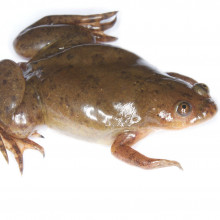
01:03 - Regrowing frogs' limbs
Regrowing frogs' limbs
Michael Levin, Tufts University
At the moment, unless you're a salamander - which can regenerate whole chunks of itself - if you lose a limb, or any complex body part for that matter, it won't grow back. But that doesn't mean it can't. The cells of our bodies have, as Michael Levin from Tufts University puts it, got the collective "know how" for doing this. It's just a question of telling them to use it rather than reverting to the default option, which is to seal up a wound with a scar. After all, our entire bodies built themselves within the space of just 40 weeks from a single fertilised egg. So, can we reactivate certain parts of that same developmental programme to put ourselves right? In frogs, at least, as he explains to Chris Smith, Michael Levin thinks he can..
Michael - In our lab, we have discovered certain signals, triggers (in particular, bioelectric ones) that kickstart very complex downstream programs such as making eyes and brains and other things. Our goal is to identify the triggers that convince the cells to go to a regeneration route as opposed to a scarring route.
Chris - In this instance, you were looking at limb regeneration in an amphibian. Talk us through what you actually did. What would happen if you didn't intervene and what actually happened when you did?
Michael - We chose the frogs Xenopis laevis, a frog species that's used for a lot of work in immunology and cancer in developmental biology and neuroscience. We used adult animals - very large frogs. They do not regenerate proper legs back if they're lost. We wanted to provide two things - first, we wanted to provide a localised microenvironment to the wound - so, very tightly control the environment around that wound site to convince these cells that they were in a safe circumstance; that they could go on to regenerate. Then, we provided some drugs which would activate certain pathways that would shift that decision point towards regeneration. There's a thing called a bioreactor, which contains a silk based gel which carries some of the drugs that fit onto the amputation wound. It stays on for just 24 hours and the leg growth is apparent well over a year after that process.
Chris - So, if you just removed a limb from one of these animals normally, they would get very little regeneration, but you put this silk soaked cocktail onto the wound site, just for a day, and then you get something that continues to develop for a year?
Michael - Correct. Normally, at best, they would make this little flap of tissue that is quite soft - it has no feeling to it, it has no ability to be used to support weight. It's just this little flap of tissue. When you confront these cells with a bioreactor carrying these drugs in the first 24 hours, you trigger a very lengthy and very complex patterning process that results in lots of new tissue growth, bone growth, nerve growth, blood vessels, and ultimately a pretty good limb that is functional. It's both sensitive to touch and it's motile (the animal can use it to get around).
Chris - How does the leg know how big the frog is? In other words, it's going to grow, it's going to keep growing for a year, so how does it know when to stop?
Michael - That's an outstanding question that is actually very poorly understood. It's the same question as asking how do the cells of a frog know how big the frog should be in the first place during embryogenesis. Frankly, we still don't really understand that.
Chris - And the growth does stop? You're not going to end up with a giant leg with a little frog attached at the end of this? Does it actually make a frog sized matched replacement body part?
Michael - That's correct. The body part is absolutely scaled properly to the rest of the tissue.
Chris - And have you taken this beyond frogs yet? We know that many of the factors that make these sorts of things happen in frogs, they exist in us as well, don't they? So have you now started to try this on more complicated, higher animals to see if the same can occur.
Michael - Yes. Those are exactly our next steps. We have a spinoff company called Morphoceuticals, Inc., whose mission is to try to take this technology towards a point where someday it will be useful for therapeutics and human patients, and we are just beginning to work in mammalian models.
Chris - What about if you come back to people that had their injury years ago? In this instance, you made the injury, while the wound is fresh you apply the bioreactor to it for that 24 hour period, what would happen if you went back to a frog that lost a limb a year ago? Would the window have closed by then? It's too late?
Michael - It's a good question. We don't know because we haven't done it yet, but I don't believe it would be too late. I think, at worst, you might have to reopen a cut surface there, but I think the fundamentals which make this possible are still there. In other words, you still have cells there that have all of the information needed to know what a correct frog looks like, and all of these cells are constantly undergoing maintenance and keeping that frog together despite the fact that individual cells are always aging and dying and keeping cells from turning cancerous and so on. That type of homeostasis, that ability of these cells to continue to work together towards maintaining a good organism, is always there, and I think that once we really crack some of the big scientific questions here we will be able to trigger that even long after the original injury.
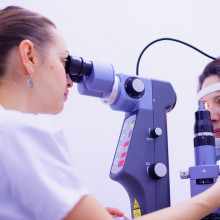
06:35 - B-eye-onic breakthrough
B-eye-onic breakthrough
Mahi Muqit, Moorefields/UCL
A new “bionic eye” system has been successfully implanted in a patient in the UK. The recipient was a woman with a condition called age-related macular degeneration, which progressively robs victims of their central vision, greatly reducing their quality of life. Julia Ravey spoke to eye surgeon Mahi Muqet, who performed the implant surgery, to find out more…
Mahi - At Moorefields last week there was a patient who I had implanted an electronic chip into in December and her eye had settled from the operation. She has a condition called dry age related macular degeneration, where she's missing the very centre of the eye in a particularly large area. There isn't any treatment for this, so our clinical trial is looking to implant a device that essentially replaces the light sensitive cells in that part of the eye. The good news was that the electronic chip was working one hundred percent and she actually was very quick to pick up how to use the system.
Julia - How does this bionic eye implant work?
Mahi - It's a pair of glasses that the patient wears. There is a small video camera and it captures about a 50 to 40 degrees field of view. That is then passed from the glasses down to a small pocket computer that sits on the patient's waist, that can be tuned and that then sends a much cleaner image to the glasses. The signals are then beamed using near infrared light inside the eye, directly over the electronic chip. It's about the thinness of a human hair, so it's very, very tiny, and we have these specialised technicians that will help her to use the device and start to scan her visual world.
Julia - Why is it electrical signals that get sent to this chip?
Mahi - It's a bit like solar panels. Out in the desert you may see these cells called photovoltaic cells, that's the technical term, but they're essentially small electrodes; little cells. So, the electronic chip has 300. I think 78 of these small electrodes are called pixels. The near infrared light from the glasses is beamed onto the chip that then charges up these small electrodes to start working. You then have little currents that run through the chip and then the tissue surrounding the chip inside her retina starts to pick up these signals. They start to work and then the network kicks off and all the human function inside the eye helps to take these signals, process them, and they go down the optic nerve to the brain. Imagine you're looking at something, like a letter box, you see it upright, you see it in the right direction - that's to do with all the processing inside the eye. If you didn't have that, it might be lying on its side or upside down. So, what we found in a previous trial is, with the chip, patients are able to see everything in the right orientation - that's due to the processing. That's the chip working with the cells of the eye.
Julia - Amazing. So, for the cells that I'm missing, it's plugging that gap and allowing you to still patch in the signal to the brain.
Mahi - Exactly, yeah.
Julia - How clear is the vision that you get from it? If I was looking at an eye chart, what line would I be able to read if I had this chip in place?
Mahi - From seeing just shadows, they were able to recognise individual letters and they were also able to scan words. So, if you imagine a patient that has no vision in the centre, is completely dark, they're starting to pick up words and letters. We anticipate that perhaps they could pick up about two lines on the charts, but it's such a small study that now the European study will look at lots of different people in lots of different countries, and then you put all the results together and that will give you a much better and more accurate result from the trial.
Julia - You mentioned that there are trials going on now for using this chip. What more needs to be done before the technology is more widely rolled out?
Mahi - So the first one was what's called 'the first in humans' - you put the device into patients to actually see if it works. And then once, you know it's safe, you run them over a much larger group of patients and then you follow them up during the study and it's a three year study. The results usually come out towards the end of the study period and, at that point, people are then preparing the next steps. Once we see the results, the next step is being planned.
Julia - It really does sound like life changing technology. How do you think devices like this will change the field of sight restoration?
Mahi - Well, I think for this particular condition, where as you are probably aware, there is no treatment available, if you can restore some form of vision for a patient that's essentially blind in that eye, it can give a significant improvement in the quality of life.
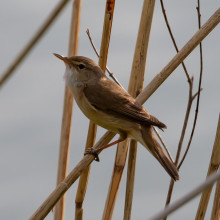
11:36 - Magnetic fields guide migratory birds
Magnetic fields guide migratory birds
Joe Wynn, Institute of Avian Research
There’s a growing body of evidence that birds can detect magnetic fields like the one around the Earth, possibly by “seeing” them. And this, researchers think, accounts for how migrating birds, like reed warblers, manage to find their way, seemingly unerringly, half way around the planet. But it’s more subtle than just using the magnetic field like a compass. What Oxford University’s Joe Wynn thinks is happening is that the birds are pre-programmed by their upbringing to fly in a certain direction, but they use the angle - or inclination - of the Earth’s field, to work out how far north or south they’ve travelled, so they know where to stop. Anoushka Handa reports…
Anoushka - 1% left on my phone. No, no, no, no, no, no. Phone's dead, Maps is dead. How on earth do I get home? I wouldn't have to worry about this as a songbird. The earth's magnetic field is key to guiding birds on their journey, but it changes year by year. So, how do reed warblers, a type of songbird, know exactly where to fly home to? If the magnetic field changes year on year, surely they'd also get lost like me. A study involving 80 years worth of data on travel of reed warblers has given us an inclination of how these birds find their way home. Joe Wynne tells us more.
Joe - We found that birds pay attention to something called inclination. Magnetic inclination is the angle between the Earth's magnetic field and the Earth's circuits, and this is one of a number of cues that can be extracted from the Earth's magnetic field.
Anoushka - The magnetic inclination acts essentially as a stop sign for these birds? Is that right?
Joe - Yes. I mean the big problem with using a single cue is that there are lots of places on earth with the same magnetic inclination. In the case of inclination, specifically, because it varies with latitude, all the points on the same latitude have more or less the same inclination. The question we had when we found that birds seemed to be following an inclination was - "They have to use something else, surely." Birds would be travelling along an already determined direction, maybe they inherit it genetically? They would be traveling in this direction and they would wait until they hit the magnetic inclination value that they thought represented their home, and then they stop.
Anoushka - The inclination is the same in different areas of the earth. How do they know that this is the place that's home and not the place on the other side of the world that has exactly the same inclination.
Joe - I like to think about this like those little cars that you have as a kid that you wind back and then release. The reed warbler is like a small car in the sense that, when it's released, it travels in a straight line. And I kind of imagine the inclination as like a brick wall - the little car hits the wall and then it stops. In the same way, the reed warbler is travelling in a straight line until they encounter the inclination that they think represents their reading, and then they stop. We understand very well that songbirds probably inherit the direction that they go in when they leave the nest for the first time when they're going South, so it's not unreasonable to suggest that such a mechanism might also help them on return, but it's obviously very hard to say with the data that we've got.
Anoushka - Are there any other animals that have these magnetic campuses and can find their way home using the Earth's magnetic field?
Joe - There's some good evidence for the use of magnetic sensitivity in sea turtles, sea turtles use the magnetic field to remember where to return to. And there's similarly some pretty good evidence in salmon for the use of mag reception in order to find where they spawned.
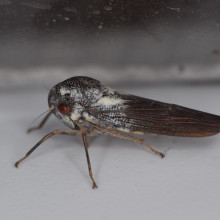
16:41 - A new insect has been discovered!
A new insect has been discovered!
Alvin Helden, Anglia Ruskin University
Scientists in Cambridge announced this week the discovery in Uganda of a new species of insect that belongs to a group so rare that its closest known relative was last seen in 1969! The new species is a leafhopper; these animals drink sap from plants and in turn are food for birds, beetles and spiders. Alvin Helden, from Anglia Ruskin University, was doing fieldwork when he made what some have dubbed a “once in a lifetime discovery”...
Chris - Alvin. Tell us what the leafhopper looks like.
Alvin - Right? Well you know what a cicada is, it's like a miniature cicada and this particular one looks a little bit odd for a leafhopper. In addition it's a little bit humpbacked, they're generally not that humpbacked. It's quite dark in colour, most are quite lighter. And it's got a sort of metallicy sheen, particularly in its wings, which is really quite unusual too.
Chris - How did you stumble across this one?
Alvin - Okay. I had a little project going, trying to find out the number of kinds of species that existed at a national park in Uganda called Kibale. I was sampling for leafhoppers and I was using a sweet net through some bushy vegetation and I came across this one. I thought it looked unusual, but I didn't know for certain what it was. It was only when I got it back to the UK and I was able to look through various identification guides. I came across a drawing, looking very similar to this and I thought, 'Ah. That's it.' And so I followed that up and then discovered it was very rare indeed.
Chris - How do you notice a new species though?
Alvin - You have to kind of do some research into the literature. See if anybody's found anything before and assume somebody found something really quite similar in the same, very close group. But then you have to actually look at the detailed structures. Particularly in leafhoppers, you really have to look at male genital structures, so really you're talking about the penis and the associated structures. You have to look at that and compare it with other specimens of other species. When I did that, I found that this one was unique and it was different from the very close relative that had been found before.
Chris - Now, the fact that you've discovered something so rare, does that mean that you are the world's luckiest scientist or does this mean actually, they were rare once, but in fact, perhaps conservation efforts or other are sorts of bio remediation efforts to restore environments are working, and in fact, they're now becoming more common than they were?
Alvin - We really don't know. Only three individuals of this particular small group of leafhoppers have ever been found. We don't know why they are so rarely found. Is it because they are really rare and they're just so few of them, or is it, we are just not looking in the right places? Maybe it's just that we don't find them because we don't look in the right places, but we don't know what those places are. We know very, very little about these particular insects and why it might be rare. We can't really say anything about how successful the conservation is. Where it's found is in a national park called Cali national park, which is well protected and it's treated very well by the local people in terms of respecting the boundaries of the national park pretty well. It's in a fairly safe place, but of course, surrounding that national park has been really badly deforested in many ways.

20:03 - The impact of Veganuary
The impact of Veganuary
Stacy Pyett, Proteins for Life
You may have missed it, but it is the end of “Veganuary” the month where we’re encouraged to eschew meat in favour of meat-free meals. Perhaps you gave it a go? We keep hearing how bad the meat industry is for the climate, so has the substitute meat industry actually made any difference to the amount of meat we eat? Stacy Pyett from 'Proteins for Life' is interviewed by Harry Lewis who went down to his local deli to investigate…
Harry - So I'm here at my local Sainsburys, and there's a good half aisle that's been just given over to these meat substitutes. It's quite a range as well. You've got your burgers, you've got your no-chicken chicken pieces, your no-ham ham slices, eight meat-free smoked bacon rashes, NYC, deli pastrami style, sandwich slices. I mean, what's that? I don't even what is that one made of? What is that made of? Made with microprotein. Microprotein? I don't even know where that is. I have to look that one up. We've all seen it over the past decade or so these substitutes are not necessarily even substitutes, just vegetable alternatives have become pretty commonplace and it feels like more and more of the aisle it's being handed over to them. One person that does know if this increase in product is having an impact on the market is Stacy Pyett from Wageningen University & Research. She's the program manager of proteins for life.
Stacy - That phenomenon that you have observed is pretty common across most of what Western Europe and North America. Right now in almost all of those countries, we're seeing growth upwards of 8% year on year in this category, which is extraordinary for the food market.
Harry - Yeah, 8% seems massive for this industry. Do we know where that extra food is going? Obviously for those replacements in particular, the intention is to take over the market from meat. Do we see a correlation in the reduction of meat consumption as these different brands increase in their sales?
Stacy - Not yet is my answer. We're not seeing a corresponding decline in meat consumption across those countries where we're seeing an increase in sales and plant-based alternatives yet.
Harry - Why aren't we seeing that correlation? What is happening is they're just more food on the market?
Stacy - Well, for one thing, I think, these products are still a niche. If we look at the global protein market these alternatives are growing fast, but from a small starting point. They represent less than 2% of the global market right now. And then the next question is how are people using these products? And the hope of course is that you're going to use a plant-based burger, to replace a meat burger. But we just don't know yet if that's what's happening.
Harry - Do we have any theories as to the patterns of consumption that are going on behind closed doors?
Stacy - We do have some theories. There's one possibility, which is what we call the halo effect. And we know that from the energy transition that we might be sort of overcompensating and rewarding ourselves in a way that negates the good effect. For example, if you, you know, you bought energy saving light bulbs, you might think to yourself, well, in that case, I can just take my car and drive back and forth to the supermarket because I'm saving over here and what we tend to do is overcompensate or over reward ourselves, it's possible that that's happening here, that people are taking, for example, a meatless Monday, but it, you know, Friday evening they're taking a double portion of meat to compensate. Another option is that there are genuinely people who are reducing their meat consumption in one segment of society, but another segment of society that is overcompensating or actually increasing their meat consumption. And that is sort of balancing it out. For that reason, we're not seeing a decline show up.
Harry - And I suppose the difficulty arises here because there are so many variables to consider. Absolutely
Stacy - People's behaviour is very complex. The easiest that we have to ask people about their behaviour is to ask them in the Netherlands, two thirds of people tell us that they're actively reducing their meat consumption, but that just doesn't square with the numbers that we have. So asking people is not an effective method to measure what's really happening.
Harry - I think one of the most attractive components to going meatless as well, definitely for some of the vegetarians that I know, is that it can be quite a cheap way to eat. My only thought is that over the past decade, these products have remained pretty pricey for something that's vegetable based. Do we expect that to decrease in the future? Stacy.
Stacy - You know, one reason for them being expensive at the moment is what I said before that they're still quite a small piece of the market. They're still rather niche. And we know that producing things on a large scale is always more cost effective than producing a small scale or a niche product. So there's good reason to hope that the price will come down.
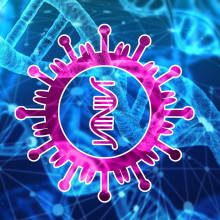
26:15 - How viruses give us clues about their origins
How viruses give us clues about their origins
David Matthews, University of Bristol & Aris Katzourakis, University of Oxford
Now it's hard to believe that it's been almost two years since a pandemic was declared for a new virus that could cause serious respiratory disease. Although the virus has changed and caused several waves of infections since early 2020, the debate around where the original virus came from continues to rage on…
Julia - While the initial focus of these investigations honed in on trying to find the animal intermediates from which the virus jumped through to get to humans. More recently, talks of a lab leak have started to surface. So, which theory is right? Well, we have to start back at the beginning
News Readers - COVID19 News montage
Julia - Throughout history, we have faced constant threat from disease outbreaks. Tiny pathogens, invisible to the naked eye, can hijack our systems, use our cells as breeding grounds to increase their numbers, and leave devastation in their wake.
Chris - Each one of these outbreaks from a global pandemic to a few cases in a community, leaves a trail though, a clue as to where it's come from. And that is its genetic material. And for the SARS-CoV-2 virus, which causes COVID 19, this code has been at the centre of trying to crack how and where this virus originated.
David - SARS-Cov-2 is a kind of virus known as an RNA virus
Julia - That is David Matthews, a professor of virology at the university of Bristol, who specialises in the study of coronaviruses.
David - We were working on coronaviruses before the pandemic started. So we immediately made requests to see if we get a hold of SARS-Cov-2 and start to chip in our expertise.
Chris - Like a recipe book, genetic material encodes the instructions for life. From humans, to dogs, to mice, plants, bacteria, and viruses. SARS-Cov-2 is generated from a 30,000 letter long set of instructions that are written using a form of genetic material that's a chemical relative of DNA that's called RNA.
Julia - And just as the human genome project has helped to reveal how our cells work, the coronavirus RNA code can tell us about the properties of SARS-Cov-2. But reading the viral genetic code is not as simple as opening that recipe book at a certain page and scanning through. It requires specialist equipment and experts like David to translate its meaning.
Chris - As well as using genetic material as a blueprint to predict how a virus might act, it can also be used to trace where it came from. Like humans, a virus has a family tree, a line from which it was descended. And if you look at your parents or siblings or cousins or grandparents, your genetic code will be more similar to those members of your family than it would be to say a stranger in the street.
Julia - Although we are all human and our genetic instructions contain the same recipes, small spelling mistakes - a changed letter here and there - generates different outcomes when these instructions are followed.
Chris - Those spelling mistakes or mutations are more similar between family members than strangers. Meaning we can trace our lineage by comparing our genetics and viruses are just the same.
David - What happened at the beginning of course is, they extracted the RNA from the early patients and sequenced it. And what you do then is you compare the sequence of the genome that you've got with all the other genomes of all other known viruses.
Chris - David Matthews. And that is how you track down the closest relatives of a new virus to find out where it may have come from and how it emerged. Aris Katzourakis from the University of Oxford works on how this trail of genetic breadcrumbs can be used to lead us back up the evolutionary tree to find the ancestors and therefore, the sources of diseases like COVID19
Aris - Evolution leaves imprints that can be deciphered when we read the genome of a virus. By comparing sequence data from different species, we can try and work out where different viruses may have come from, what kind of species they may have crossed from. Let's say you see a virus in a human, and it's incredibly similar in terms of sequence data to a virus in a mouse, you may conclude that there has been some source of transmission between those two species in recent history,
Julia - The more similar a virus' code the more closely related they are. And if we find the parent, we can crack the mystery of where this virus SARS-Cov-2, which caused one of the most significant pandemics in our history, originated.
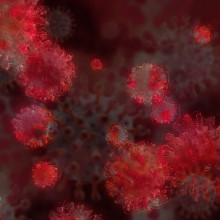
30:36 - Looking to SARS & MERS for Covid origins
Looking to SARS & MERS for Covid origins
Matt Ridley
Before we explore COVID19s origins further and what theses genetic analyses are, and aren't telling us it's helpful to step back a bit and consider the other earlier examples of coronaviruses that have made the leap into humans so we can ask whether COVID19 is any different. The first encounter was back in 2002 with the coronavirus that became known as SARS, short for severe acute respiratory syndrome, which spread around the world from China and circulated for about a year infecting thousands of people and causing hundreds of deaths. The other, which came a bit later, is called MERS - middle Eastern respiratory syndrome, which was first picked up in that geography. Matt Ridley, such journalist and coauthor of the book "Viral - the search for the origin of COVID19" explains...
Matt - So the world first became aware of SARS in February 2003, but it quickly became apparent that people had been picking it up as far back as November the previous year. By May 2003, scientists had worked out that the early cases were mostly people who were handling food or were chefs, and that certain animals seemed to be carrying the virus, in particular palms civets. And by the summer of 2004, testing wildlife had revealed that bats were carrying a virus that was ancestral to both the civet version and the human version. MERS was first detected in 2012 and at first there was something of a mystery as to where it was coming from - there was only one case initially. But fairly quickly, within a few months, it was clear that the people who were handling camels were picking up the virus more than other people. And so camels were tested and found to be carrying the virus. It was later determined that the ancestral virus lives in bats. So probably the camels had picked it up from bats, although no direct evidence for that has ever been found.
Chris - While these outbreaks occurred in two geographically distinct locations and a decade apart, the origins of both outbreaks do share remarkable similarities.
Matt - Bat to animal to person in both SARS and MERS was very quickly established.
Chris - Infections that jump from one species to another called zoonosis. And although viruses carry their own genetic code, they are too small to carry along the machinery that they also need to copy themselves. It's a bit like having an Ikea instruction manual without the flat pack. The genetic code is useless for growing new viruses, unless it can sneak into warehouses - like our cells, that are packed with all the tools and raw materials that they need to copy themselves. But when they do break in, viruses grow at an alarming rate.
Julia - But growing fast comes at a cost. Just as if you try to type really fast, you'll make more typos. And when viruses copy their genetic material, spelling mistakes called mutations crop up in these copies. And this can alter the properties of the virus.
Chris - For instance, these changes can facilitate a virus being able to jump from one species into another. Normally viruses are very good at breaking into cells of a specific animal because they have keys designed to open those warehouses to unlock all the materials that they need to replicate. But if mutations arise that alter the properties of the virus and reshape its viral keys, then they can unlock cells of other organisms, enabling the virus to jump the species barrier and exploit a whole new group of animals, including us.
Julia - And in the case of SARS-Cov-2, the patterns of previous outbreaks directed the initial search.
Matt - The authorities immediately assumed it was through the food chain, just like SARS had been. They closed down the Huanan seafood market. A number of the early cases had connections to that market, but not all of them. And they tested the animals they found in the market, they tested the food in the market and they tested the surfaces and door knobs, countertops, and sewage. They found the virus on the surfaces, but they did not find it in any samples for sale in the market. And in fact, over the succeeding months, the Chinese authorities tested 80,000 animals all across China in an attempt to find an infected animal, as they very quickly found in the case of SARS. No ancestral version of the virus has been found in an animal apart from in human beings.
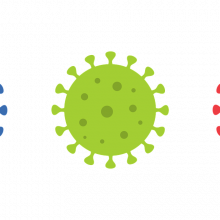
34:57 - The closest relative of SARS-CoV-2
The closest relative of SARS-CoV-2
Jesse Bloom, Fred Hutchinson Cancer Research Centre
In the absence of an obvious animal on which to pin the origin of the COVID19 virus, we return to what the genetic code of the virus can tell us. Is this virus, for instance, from the same source as its four bears, the original SARS or MERS viruses. That genetic code says not…
Julia - These viruses are very different. When comparing SARS-Cov-2 to the original SARS virus, their genetic codes are 79.4% similar. While that sounds like a pretty high number, in genetic terms that is about as similar as a human is to a cow. And when compared to MERS, this similarity drops to around 50%. So in order to find a closer relative, the genetic sequence of SARS-Cov-2 was compared to other documented coronaviruses already discovered in the wild.
Chris - Jesse Bloom studies viral evolution at the Fred Hutchinson Cancer Research Centre.
Jesse - The two closest known relatives of SARS-Cov-2 are two different coronaviruses that were isolated from bats. So one of these viruses, the first one that was known is called RATg13, and that was a virus that was sequenced at the Wuhan Institute of Virology and they had collected it from a bat cave in Yunnan province. More recently, another virus similarly close to SARS-Cov-2 was discovered in Laos. These viruses are both about 96 to 97% identical to SARS-Cov-2.
Chris - 96% the same is a lot closer. But how far apart in evolutionary terms is that missing 4%? In other words, given the rate at which coronaviruses evolve, how long would it take to fill that genetic gap? The answer is still a very long time.
Jesse - That corresponds at sort of the evolutionary timescale of a number of decades, say 30 to 50 years of time from which they diverged. It's also really important to emphasise that something like RATg13 is not the ancestor of SARS-Cov-2. The relationship between SARS-Cov-2 and these bat viruses is like the relationship between, let's say you and your cousin. Neither you or your cousin are descended from each other, but you have a common ancestor.
Chris - I was just going to say, it's a bit like we know chimpanzees and humans share a very high fraction of our genetic material. It's not that we have descended from them. It's just that we have descended from a common ancestor. We both shared an ancestor back in history. So that argues, then there must be some kind of virus back in history that gave rise to SARS-Cov-2 and to these viruses you've just mentioned. So where is it then?
Jesse - It's not known. These two closest known relatives to SARS-Cov-2 were from bats that were in Laos or Yunnan province, both of which are actually fairly far away from Wuhan. So it's believed that the ancestor of SARS-Cov-2 is probably a bat coronavirus that existed somewhere in this geographic area. But how that bat coronavirus got to Wuhan is what remains unclear.
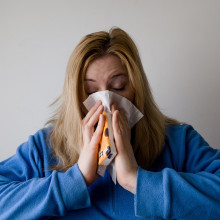
38:31 - Evolutionary spillover of SARS-CoV-2?
Evolutionary spillover of SARS-CoV-2?
Aris Kazourakis, University of Oxford & Jesse Bloom, Fred Hutchinson Cancer Research Center
We found a close relative, but not close enough to tell us exactly where the SARS-CoV-2 virus came from. Jesse Bloom explains how this has led to two theories for how the virus has acquired its seemingly novel genetic changes…
Jesse - Well, there are two possible theories. One possible theory is that somehow it got there by natural infection - it naturally infected some human who travelled there or some animal that was moved there. The other possibility is, it's known that there were a number of labs in Wuhan that were collecting large numbers of these bat SARS related coronaviruses and bringing them back to Wuhan to study. So, it's also possible that scientists collected a similar virus, brought it back to Wuhan, and then there was some sort of accident.
Julia - Almost all major outbreaks of infectious diseases in humans have occurred when viruses, bacteria, or parasites jump from an animal into a human.
Chris - The black death in the middle ages, the most deadly pandemic in recorded history, was caused by a bacterium that spread from wild prairie dogs into black rats, then to their fleas and ultimately to us humans. Flu pandemics begin in birds.
Julia - And, as we heard with SARS and MERS, both viruses originated in horseshoe bats and via two different intermediate species, palm civets and camels, which were able to find themselves inside a human host.
Chris - This evolutionary spillover has been the leading theory behind the differences we observe in the SARS-CoV-2 genome.
Julia - Aris Katzourakis explains.
Aris - In the hunt for trying to work out where these viruses, the lineage are called sarbecoviruses, have come from, scientists have read the genome of isolates of SARS CoV2 and they've compared that to other viruses that are genetically related to SARS CoV2 and tried to use that to disentangle these kinds of patterns of transmission. By comparing the sequence to similar sequences in bats or pangolins or other mammals that harbour sarbecoviruses, we can produce an evolutionary tree and try and work out where within this diversity of viruses SARS CoV2 sits. It's generally nested in the lineage of viruses that includes lots of bats viruses. and so, while we're not necessarily able to have the one precise bat that led to the transmission to SARS CoV2 and to COVID, it certainly seems to be the case that this is part of a larger family of viruses that includes lots of viruses found in bats.
Julia - Researchers have been working tirelessly to find a closer relative of SARS CoV2 in the wild, as this could bring us closer to where this virus made the jump.
Aris - I think it's probably fair to say that people have been sampling as intensely as they possibly can for this virus, subject to the constraints and the realities of the fact that you can't pick out every single mammal. One thing that is sometimes the case, the real clear example of direct ancestry, is when your sampled sequences form a cone-like structure in your phylogenetics tree with your one sequence of interest sticking out from the tip of that cone. We don't exactly have that for SARS CoV2, but we certainly have a lot of bat-like viruses surrounding these sequences of interest.
Julia - While we still haven't found the intermediates or closer relatives we would expect to see if a virus had made a jump from animals to humans, that doesn't mean it isn't out there.
Aris - If you think about HIV and the search for the ancestor of HIV, it took quite a while to find the exact lineages of chimpanzees, for example, that are most closely related to circulating HIV. And finding the direct ancestor, the actual chimp behind the bush that gave that initial transmission event, that's not something that we still have. We don't have that one perfect sequence there, although it's completely obvious now that there has been transmission from chimpanzees for HIV-1. With SARS 1, we also saw a series of false dawns in the search for an ancestor of that outbreak. It took a while to settle on the most likely source species. It's just a matter of the vastness of the range. There are over a thousand species of bats, and there are so many different colonies to sample that finding that one direct ancestor might be impossible.
Julia - So, just because we haven't found it yet doesn't mean that it doesn't exist?
Aris - Yeah, absolutely.
Julia - Some of the other reasons researchers are still convinced this virus emerged from nature has come from information that revealed rare animals, which can host coronaviruses, had been present in wet markets in Wuhan, which may make it very difficult to find the intermediate scientists are after.
Chris - In addition, early tracking of the virus suggests it may have been present in multiple wet markets at once, potentially indicating a batch of animals or different traders were the sources of infection.
Julia - Work is continuing to try to find a natural reservoir of a closer relative of SARS CoV-2.
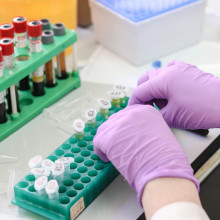
43:36 - How can viruses escape labs?
How can viruses escape labs?
Jesse Bloom, Fred Hutchinson Cancer Research Centre & Alina Chan, Broad Institute
As the search continues for the ancestors of SARS CoV-2 in the wild, another hypothesis has circulated - the virus leaked from a lab. When first proposed, many dismissed the idea out of hand on the grounds there already seemed to be a reasonable explanation for how the virus emerged. But, the possibility that SARS CoV-2 is an escaped laboratory experiment has gone back up the agenda with the discovery in recent months of new evidence of the kinds of experiments that were being conducted, or at least proposed, at the Wuhan Institute of Virology…
Julia - This kind of work is vital to understand the pandemic potential of some infectious diseases, but, as David Matthews who studies MERS at his Bristol lab explains, this kind of work needs to be conducted very carefully.
David - We have a high containment facility here: containment level three. It's airtight, it's sealed, it has an air handling system that sterilizes the air inside the room Only sterile air leaves the room, so nothing escapes, and then within that room we have another cabinet which is called a "class three cabinet", which is the sort of thing you see in Hollywood movies where you've got a sealed box with giant rubber gloves that you stick in and there's airlocks and techniques for passing things in and out. Anything that leaves that contained box has to be sprayed down with a bleach solution and left for 15 minutes and, even before we do all that, we have to do a series of experiments to prove that our techniques for sterilizing things actually do kill viruses. It's a series of layered defense between yourself and the dangerous virus.
Chris - But where there are humans, there are, of course, potential or real errors. Lab leaks have happened before as in the case, for example, of foot and mouth. Alina Chan, who's a scientific advisor at the Broad Institute of MIT and Harvard, and co-author with Matt Ridley of 'Viral, the search for the origin of COVID 19', explains -
Alina - We know that lab leaks occur quite frequently, and accidents happen to even the most highly trained people; as long as there's human error, there's a chance for a virus to escape from a lab. This was demonstrated in the recent lab leak of SARS CoV-2 in Taiwan in late 2021. That was a researcher in her twenties, she was fully vaccinated with Moderna, but she had been bitten by a mouse at least twice in that lab. She was diagnosed on December 9th, 2021 and Taiwan immediately launched an investigation into the lab, as well as all of her contacts. Within 12 days, they had already publicly announced that they had concluded the investigation into the lab. They said it was definitely from the lab. They went into that bio safety level three lab where the animal work had been done. They found contamination all over the place and then also identified several flaws in protocol where there were human error. So, we know that it can happen.
Julia - Wuhan house is one of the leading laboratories in the world for studying SARS like viruses, which is important to take into account.
Alina - With SARS CoV-2, the virus that causes COVID 19, we know that it occurred on the doorstep of a lab in Wuhan city that had a long history of collecting SARS like viruses. So, the question is, did it come from the laboratory in that city?
Chris - Are there any other explanations, though, because one must be cautious about the difference between cause and association: if one asks "do fire engines cause fires because I always see fire engines where I see fires", I could draw the wrong conclusion. Are there other possibilities?
Alina - COVID 19 was detected in the city where they had the world's best expertise at tracking SARS like viruses. They had spent the last decade, at least, searching through south China and Southeast Asia where these viruses were known to be found. The spillover zone for SARS-like viruses is down South, like thousands of kilometres South, so it's not impossible that an animal was infected and was somehow transported all the way up, thousands of kilometres up into Wuhan, and only caused an outbreak there, but I'd say that the odds are pretty low.
Chris - Were the agents, meaning the samples, the possible viruses? Were they similar enough to what we see now causing COVID 19, the SARS CoV-2 virus, for that to be a reasonable prospect? Or were they studying viruses that were so different that the chances of what they were collecting turning into the causative agent behind COVID 19 so remote as to be impossibly likely?
Alina - We now know, based on the work of independent analysts and scientists, that when COVID 19 was detected in Wuhan had in their hands at least nine of the closest relatives to SARS CoV-2 at that time. So, there is a lot of circumstantial evidence, I would say, that warrants a deep investigation into the origin of COVID 19.
Chris - In terms of the research they were then doing on these viruses to further study them, what were they actually doing?
Alina - Their purpose was to predict future outbreaks. To do so, their aim was to collect and study as many viruses from the wild as possible. After they collect these samples, tens of thousands of samples, they are sent back to Wuhan city and in the lab they take these samples and they sequence it. They're trying to see what viruses are in here and, if possible, they try to grow them so as to extract the virus out of the sample.
Julia - Speculation has circulated around the exact work which was going on to grow these viruses. Certain viruses are notoriously hard to culture in a lab. By altering the genetic sequence, this can then enhance its ability to grow, making it easier to study. One theory was that SARS CoV-2 emerged as a hybrid of other coronaviruses being grown. But, Jesse bloom suggests this is unlikely -
Jesse - I don't think that's possible because if SARS CoV-2 looked like two known viruses, where part of it looked like one, and part of it looked like the other, then we could imagine the scenario you're positing. But compared to the closest known viruses, SARS CoV-2 has the mutations scattered across the whole genome, so this combinational mixing - I can't explain it. Whatever SARS CoV-2 is directly descended from is a virus for which we don't yet know the sequence.
Chris - Another point of contention when trying to deduce if SARS CoV-2 arose naturally or was synthetically manipulated comes from certain sequences inside its genetic material. Specifically, SARS CoV-2 contains a structure called a furin cleavage site. This is a bit like a pin in a grenade - when this furin pin is pulled, the virus is primed to infect. Some coronaviruses naturally have these, and they do boost infectivity enormously, but, critically, none of the closest relatives of SARS CoV-2 that we have found have them. And this is what initially made people very suspicious. Alina Chan, again -
Alina - Without this furin cleavage site, the virus could have never caused a pandemic, and we know that now from studying the virus - if you take out this cleavage site, it's completely attenuated - it can barely cause disease and is barely transmissible. So, the question is, how did it appear in SARS CoV-2? The reason why some people find the furin cleavage site very suspicious is that, if you look at all SARS-like viruses that have arisen to date, only SARS CoV-2 has this furin cleavage site. So, the question is, was it natural? Was it just a freak accident in nature? Or was it put there in a lab?
Chris - Now, as furin cleavage sites are found in the wider coronavirus family, they do naturally occur in these viruses, it's not beyond the realms of possibility that this powerful genetic infectivity boost could have cropped up in the COVID 19 virus by chance. But, a leaked grant proposal that surfaced only recently and which involved The Wuhan Institute of Virology and collaborators in the US, is very grave cause for concern.
Jesse - In late 2021, a grant proposal called the DARPA diffuse proposal was released, which showed that a group of scientists were proposing to introduce furin cleavage sites into SARS related coronaviruses. That particular proposal was not funded, and it's unknown if that work ever happened, but I think at this point we certainly know that furin cleavage sites can arise in coronaviruses and that there are scientists out there who are interested in engineering them into coronaviruses.
Chris - Now we don't know if this kind of work was actually being carried out on SARS-like coronaviruses, which is why Alina Chan points out investigation is urgently warranted -
Alina - This group of researchers say that they're gonna put horns on horses and, about two years later, a unicorn strolls up in their city. So, based on that striking coincidence, there's a need to investigate.

51:57 - What next in hunting for Covid-19's origins?
What next in hunting for Covid-19's origins?
Jesse Bloom, Fred Hutchinson Cancer Research Centre & Alina Chan, Broad Institute & Matt Ridley, Science Journalist
As the quest for finding the origins of SARS CoV-2 continues, it's important to be open minded. While we haven't found the SARS CoV-2 intermediate we would expect to see in the wild yet, sampling numbers or the inability to look in certain animals may mean a closer relation could exist…
Chris - And, although looking at the genetic changes in the viruses code can give us clues as to where it emerged from, David Matthews points out -
David - I don't think there's anything in the sequence there that says to you, "Oh, this has definitely been put in artificially by people." There's no secret - if you shine a light on it in a funny direction, you can see that it's been artificially made. So, the presence of the furin cleavage site, I don't think actually means anything. Other viruses have these kinds of sequences and they have evolved independently in the past in different circumstances, but exactly where it came from, I don't think it leaves us any of the wiser at this stage.
Julia - And, until a similar species in the wild is revealed, it may be hard to come to an answer.
David - Ultimately, until we actually stumble across the progenitive virus that was in an animal before it jumped into us, it's really difficult to be certain exactly how the virus made the adaptations.
Chris - David Matthews, but as Alina Chan points out, it can't be ignored that the initial epicentre of the COVID outbreak was in the very same city that's home to a world leading Institute studying these very same pathogens, and situated nowhere near where the only close relatives of the COVID 19 virus that we've found so far actually come from. Moreover, the lab, and the Chinese government more broadly, have not made it easy for the scientific community or the World Health Organization to get the answers they're looking for. Genetic databases and published theses documenting the viruses being studied in China have been withdrawn without explanation, and the publication of other crucial details germane to the story have been very slow to emerge, frustrating efforts to piece together what really happened. It's prompted some to ask, 'Well, if there's nothing to hide, why hide it?' Matt Ridley, again -
Matt - We know that information has dribbled out about the experiments that were going on, and indeed about the viruses that they held in their freezers in Wuhan. All of this could have been discussed much more openly and transparently, and it might have led to us understanding how this virus got into human beings. It might also have given us information in time to stop the virus turning into a global pandemic when it was still just a local outbreak.
Chris - We are still unable to come to a conclusion about the origin of SARS CoV-2 because certain pieces of the puzzle remain missing.
Matt - We don't know how this pandemic originated. We have no direct evidence for an animal spill over - a natural event in a market or something like that. We have no direct evidence for a laboratory accident either. We need to find out because it's absolutely vital so that we can prevent the next pandemic, and also as a tribute to the people who have died in this pandemic.
Julia - There are questions we still need answers to, like "how did this virus get to Wuhan?" Jesse Bloom suggests how we could better understand these events.
Jesse - One way to answer that question would be more transparency with regard to both what was going on in animal markets at Wuhan and what was going on in labs in Wuhan. Unfortunately, there's a depressing paucity of information on that topic.
Julia - And we also need more time... Alina Chan.
Alina - I think that we need to be patient, because investigating the origin of a pandemic can take a long time and we can't wait to investigate the lab origin only after we have spent 10 years looking for the bat that gave us SARS CoV-2. Both have to be investigated in parallel.
Julia - While there are different proposed avenues for how SARS CoV-2 came to be (with varying levels of evidence), exploring multiple lines of enquiry might be the way forward.
Jesse- We can see that both of these are legitimate possibilities - it's certainly possible this pandemic had a natural cause and it's possible that this pandemic was caused by a lab accident. I also think we're quite likely to see future viral pandemics, so what I hope we can do as scientists is come up with good ways to continue to develop strategies that will minimise the risk of a future pandemic ever coming from either a lab accident or from a natural zoonosis.
Chris - At the time of recording, we are awaiting guidance from the Scientific Advisory Group for Origins of novel pathogens, SAGO, who are going to provide the world health organization with recommendations for what should be done in trying to figure out where SARS CoV-2 came from and how we can prevent the emergence of new and threatening pathogens in the future. We'll keep you updated on what that report suggests.
Julia - So, at the moment, the jury is still out on where SARS CoV-2 came from, but for the sake of preventing future pandemics, we hope we can eventually get to the bottom of it.
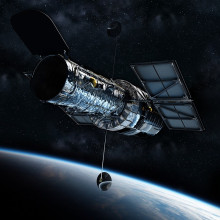
56:50 - QotW: How Hubble's Telescope mirror stays clean?
QotW: How Hubble's Telescope mirror stays clean?
The Hubble telescope has been orbiting 550 kilometres above the earth for almost 31 years now. It's a wonder how it would be maintained and cleaned at that altitude. Fortunately, Otis Kingsman asks Sarah Kendrew from the European Space Agency to shed some light on this question.
Sarah - The short answer is, we don't have to clean it. Despite what we hear about dust, debris and space, space is actually extremely empty and clean so there are no particles sticking to the surface of the mirror. Outside of the Earth's atmosphere, there's also no moisture and no molecules that can cause corrosion or degradation of the mirror. A risk Hubble does face is impact from micrometeorites. These are tiny specs, smaller than sand grains, that have typically been chipped off or eroded from asteroids in the solar system, or sometimes also materials from launched rockets and other broken satellites. Those types of impacts do happen quite regularly and they can cause some weathering and damage over time.
Otis - While these grains are small, the lack of air resistance in space causes these micrometeors to travel very fast before colliding with the telescope. Fortunately, there are a few integrated features to help avoid impacts with the mirror.
Sarah - The design of the Hubble telescope includes a tube-like structure to protect the mirror and other optics. So, these micrometeorites typically collide with the tube or the outer material. The damage is mainly seen on solar panels and on the outer covering materials.
Otis - This space debris has caused five separate missions between 1993 and 2009 to replace parts of the telescope. Thankfully, these broken pieces haven't been simply discarded.
Sarah - From the parts that were returned to earth after service emissions of Hubble, scientists were actually able to study how many of these impacts had occurred and what kind of materials the meteorites were made of. That's helped us to understand the low earth orbit environment, helped us to understand better what kinds of particles are out there, how much risk they pose to satellites, and, in turn, how to design our spacecraft and our satellites to be better protected against those impacts.
Otis - So, Daniel, the Hubble telescope is prevented from getting dirty by the natural lack of particles in space to stick to the surface, alongside the careful construction of the outer shell to protect it. Thanks to this, we can still get fantastic pictures of our galaxy 31 years after its first launch without needing to clean the mirror. Next week, we'll be answering this question from listener Krzysztof -
Krzysztof - Why don't plants freeze to death during Winter?










Comments
Add a comment